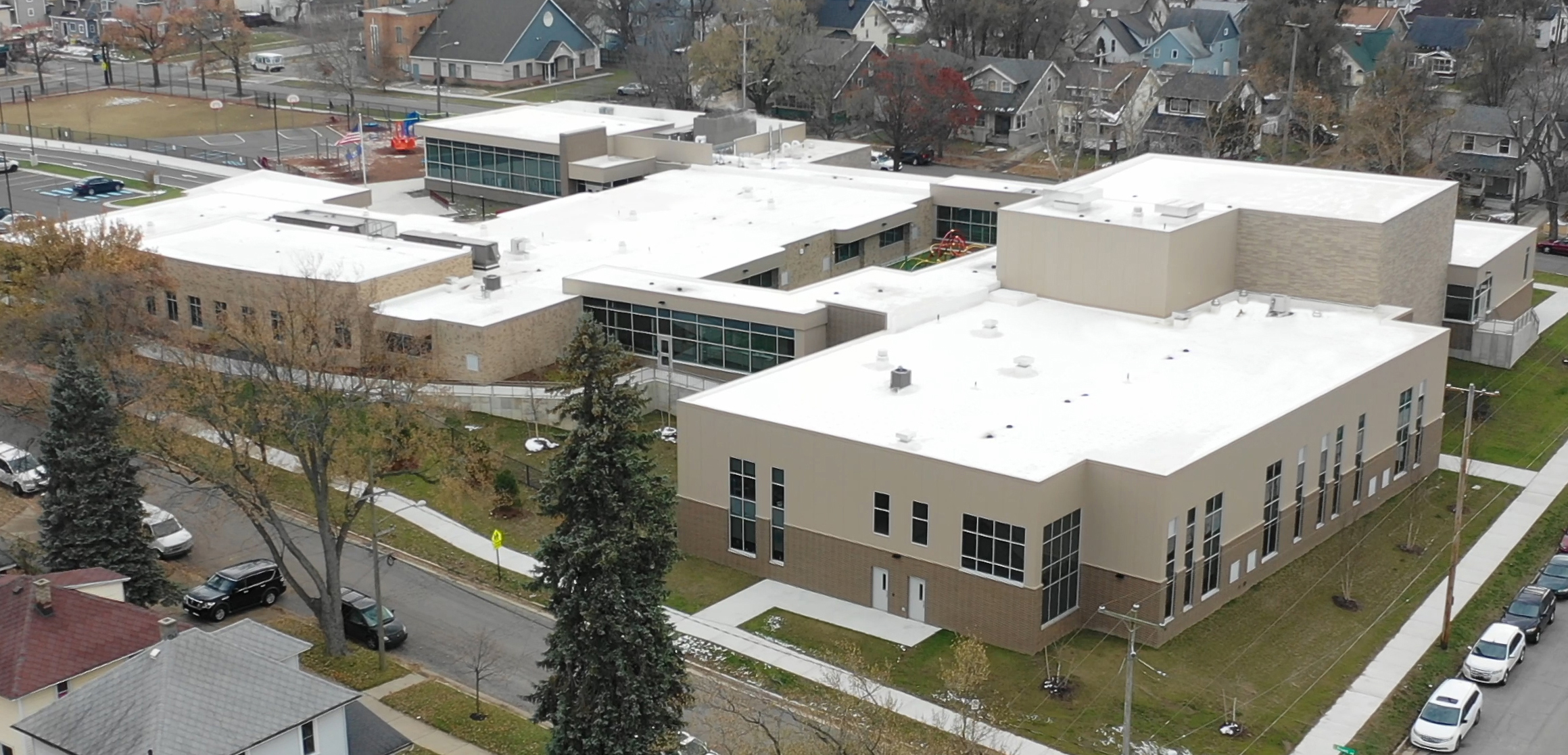Cool Roofs for a Hot Planet
Myths and Realities of PVC Cool Roofing
Although modern cool roofing has been available since the 1980s, it is a new concept to some. The following are myths and realities about vinyl and cool roofing systems.

Photo courtesy of Duro-Last, Inc.
Studies show that cool roofing systems provide energy savings and other benefits when installed in cold climates. This cool roof was installed on an elementary school in Grand Rapids, Michigan.
White Roofs in Cold Climates
Myth: White roofs do not save energy in the winter and cause energy to be lost.
Reality: While it seems that a material that keeps buildings cool in summer would do the same in winter, the reality is not so simple. The amount of heat a dark roof could potentially gain in winter really isn’t all that significant compared to the amount of heat deflected in hotter seasons. Many environmental factors reduce the cooling impact of reflectivity in the winter. For example, the low angle of sun in winter allows for little solar heating potential. Plus, shorter and cloudier days reduce the time that solar heating can occur. In northern climates, numerous days with snow cover turn any roof white. We use energy at different times of the day in the winter—with peak heating demand occurring after the sun goes down when residents are home. Many commercial buildings have relatively low heating energy demand compared to cooling demand due to the heat generated by human activity and equipment. As a result, numerous studies have shown that cool roofing leads to net energy benefits across the country—even in the far north. This reality was discussed in a scientific journal report titled “Bright Is the New Black,” which concluded in part: “It has been shown...that in colder climates during winter, lower emissivity may actually be a positive attribute for white roofs with respect to avoiding any possible winter heat energy penalty. If a performance standard for emissivity is set for roof membranes, the possibility that a low emissivity may be desirable in cold climates to avoid any winter heat penalty should be considered.”xi,xii
PVC Composition
Myth: Phthalates are harmful to health.
Reality: Without phthalates, PVC products are rigid like pipe. Phthalates are added to provide flexibility for such products as tubing, banners, tarps, and roofing membranes. In 50 years of study and use, phthalates have had a strong safety record. Based on reliable peer-reviewed studies, phthalates have never been shown to cause harm to humans when used as intended. “Human health effects from exposure to low levels of phthalates are unknown. Some types of phthalates have affected the reproductive system of laboratory animals. More research is needed to assess the human health effects of exposure to phthalates.”xiii
Former Surgeon General C. Everett Koop said that there is no scientific evidence that phthalates are harmful to children or adults. And Moore further stated that there is a significant risk in replacing phthalates with chemicals that have not been as thoroughly tested and found as safe.
Cool Roofing Colors
Myth: Reflective cool roofs can only be white.
Reality: White is the most reflective color, but cool roofs come in many colors with varying degrees of solar reflectivity. Darker colors can be significantly reflective by the use of pigments that absorb in the visible light spectrum (thus giving it a color) but reflect in the near-infrared spectrum that is not visible to the naked eye. Since nearly 50 percent of the sun’s energy is in the near-infrared spectrum, cool colored pigments can be significantly more reflective than standard pigments.
Real Cost of Cool and Alternative Roofing
Myth: Cool roofing costs more than dark roofing.
Reality: Cool roofing incurs little or no increased costs. In fact, reflective roofing saves money over time. To determine the real cost of a roofing system, be sure to calculate all the factors, both up front and into the future.









